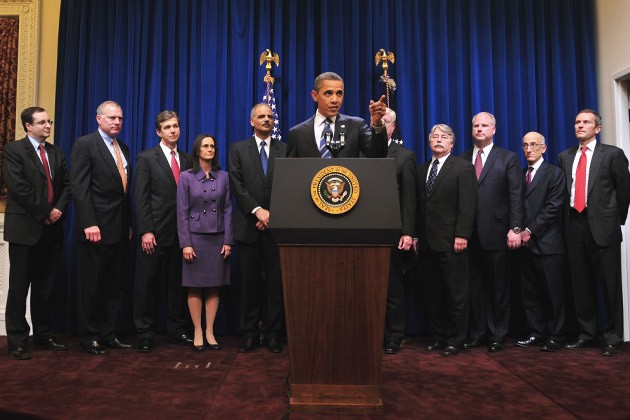Major lenders put freeze on foreclosures Feb 12 2008
Post on: 6 Июль, 2015 No Comment

Banks will halt foreclosure proceedings to give lenders time to work out delinquency solutions. It’s the latest attempt to tackle the housing crisis.
NEW YORK (CNNMoney.com) — Six of the nation’s largest mortgage lenders, in a joint effort to cool the raging foreclosure crisis, have agreed to temporarily stop foreclosure proceedings on homeowners who have fallen seriously behind in their house payments.
Under a program unveiled Tuesday, legal efforts to oust seriously delinquent borrowers from their homes will be postponed for 30 days while lenders and borrowers try to work out payment options.
The effort, known as Project Lifeline, will not be confined to borrowers with adjustable rate mortgages. So-called ARMs have recorded the highest rates of delinquencies, even as default for loans of all types have risen dramatically over the past couple of years.
For many families, Project Lifeline will temporarily pause the foreclosure process long enough to find a way out. Loan modifications may follow, said Alphonso Jackson, Secretary of Housing and Urban Development. This program is not only available to subprime borrowers but to people with any kind of home mortgage.
Project Lifeline was put together with the backing of Jackson, Treasury Secretary Henry Paulson and Faith Schwartz, director of Hope Now, the government-backed, foreclosure prevention coalition.
Paulson said the effort won’t be a magic bullet.
There’ll be homeowners who still take no action, and some will still walk away, Paulson said. But some borrowers facing immediate foreclosures may find solutions.
Throwing homeowners a lifeline
Under the program, homeowners 90 days or more behind in their mortgages will get a letter from their lenders asking them to call. Borrowers will be asked if they want to stay in their homes; if so, they will be offered financial counseling.
Loan modifications are not automatically granted. Borrowers will have to provide up-to-date information about their wages and debts. At that point, the lenders decide whether to pause the foreclosure process.
During the moratorium, foreclosure prevention specialists will determine if there’s a good possibility that a loan modification will work. In other words, will a borrower be able to regain his footing and start paying his mortgage again?
Any loan modifications — such as lowering interest rates, balances or both — will be provisional. After homeowners make payments on time for three months, the changes to the terms of loans will become permanent.
For lenders, repossessing homes has become an increasingly unprofitable venture. As real estate markets have turned down, many at-risk mortgage borrowers are upside-down — meaning they owe more on their loan than their home is worth.
These days, lenders often lose money when they foreclose on and resell properties — an average of $50,000 per home. It’s cheaper to work out a deal with defaulting borrowers.
Reaction: Applause and questions
The moratorium idea has been raised before.
Many people have been calling for a moratorium on foreclosures, said John Taylor, chief executive of the National Community Reinvestment Coalition. I look on it as a good thing.
Last April, civil rights groups, noting that minorities were bearing the worst impact of the foreclosure crisis, called for a six month halt in foreclosure proceedings. In May, the California Reinvestment Coalition, a community advocacy group, lobbied state legislatures for a similar, statewide plan. This past December, Sen. Hillary Clinton went on record supporting a 90-day halt.
Jim Rokakis, treasurer of Cuyahoga County in Ohio, which has been hard hit by foreclosures questioned the initiative.
Does this mean you’re going to do it again in 120 days? he asked. Subprime resets will peak again in the spring and Hope Now’s effort includes notification of resets 120 days in advance.
If they really want to make an impact they will require mandatory counseling before foreclosure can be completed. If you can’t do it, you can’t foreclose, Rokakis said.
As the foreclosure crisis deepened — more than 2.2 million foreclosures were filed in 2007, according to RealtyTrac, an online marketer of foreclosure properties — government forces and industry players expanded the scope of prevention efforts.
Jackson, the HUD secretary, said that Project Lifeline is just one effort to tackle the mortgage crisis. He cited FHASecure. which is refinancing many adjustable rate mortgage borrowers into government insured fixed rate loans; a five-year rate freeze. brokered by the Treasury Department, for many subprime ARM borrowers; and the provisions of the economic stimulus package that increase cap limits for loans eligible for purchase by Freddie Mac and Fannie Mae.
The sum total of these actions is a powerful correction to the downward spiral of the housing market, said Jackson.
Still, the nation’s housing crisis is deep and unlikely to ease up soon.
In terms of subprime, the worst is just beginning, said Treasury Secretary Paulson. The loans resetting over the next couple of years — that vintage was done under the most lax underwriting standards.














